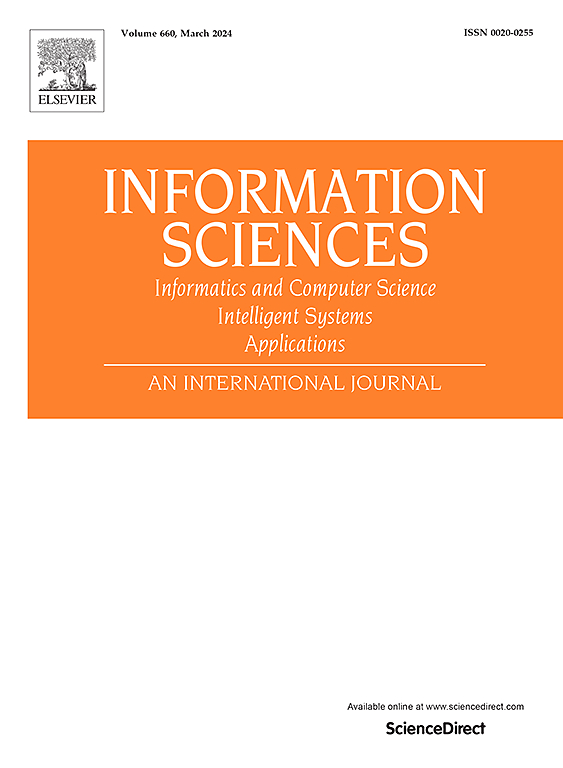AG-GNN: Adaptive gating mechanism for robust node classification in graph neural networks
IF 6.8
1区 计算机科学
0 COMPUTER SCIENCE, INFORMATION SYSTEMS
引用次数: 0
Abstract
Graph Neural Networks (GNNs) have revolutionized node classification tasks by leveraging graph structure and node features through message-passing schemes. However, GNNs frequently suffer from over-smoothing as the number of layers increases, causing node representations to collapse and lose discriminative power. In this paper, we propose AG-GNN, a novel architecture that addresses these challenges through a simple yet effective adaptive gating mechanism. This mechanism acts as a smart switch that dynamically controls how much information flows from the graph structure versus the node features at each layer. Our model’s dual-pathway design enables it to excel in both homophilic graphs (where connected nodes tend to share the same class) and heterophilic graphs (where connected nodes often belong to different classes). Extensive experiments demonstrate that AG-GNN consistently outperforms state-of-the-art methods, achieving up to 2.16 % improvement on heterophilic datasets like Cornell and 5.86 % improvement on large-scale networks like Penn94. Importantly, our approach maintains strong performance even with very deep architectures (up to 64 layers), demonstrating remarkable resistance to over-smoothing where traditional GNNs fail. AG-GNN scales efficiently to graphs with millions of nodes while maintaining computational tractability whereas several baseline models experience out-of-memory errors.
图神经网络鲁棒节点分类的自适应门控机制
图神经网络(gnn)通过消息传递方案利用图结构和节点特征,彻底改变了节点分类任务。然而,随着层数的增加,gnn经常遭受过度平滑,导致节点表示崩溃并失去判别能力。在本文中,我们提出了AG-GNN,这是一种通过简单而有效的自适应门控机制解决这些挑战的新架构。这种机制就像一个智能开关,可以动态控制从图结构流向每层节点特征的信息量。我们的模型的双路径设计使其在同质图(连接的节点往往共享同一个类)和异亲图(连接的节点通常属于不同的类)中都表现出色。大量实验表明AG-GNN始终优于最先进的方法,在异亲数据集(如Cornell)上实现了高达2.16%的改进,在大规模网络(如Penn94)上实现了5.86%的改进。重要的是,我们的方法即使在非常深的架构(高达64层)下也能保持强大的性能,表现出对传统gnn失败的过度平滑的显著抵抗。AG-GNN有效地扩展到具有数百万个节点的图,同时保持计算可跟踪性,而一些基线模型会出现内存不足的错误。
本文章由计算机程序翻译,如有差异,请以英文原文为准。
求助全文
约1分钟内获得全文
求助全文
来源期刊

Information Sciences
工程技术-计算机:信息系统
CiteScore
14.00
自引率
17.30%
发文量
1322
审稿时长
10.4 months
期刊介绍:
Informatics and Computer Science Intelligent Systems Applications is an esteemed international journal that focuses on publishing original and creative research findings in the field of information sciences. We also feature a limited number of timely tutorial and surveying contributions.
Our journal aims to cater to a diverse audience, including researchers, developers, managers, strategic planners, graduate students, and anyone interested in staying up-to-date with cutting-edge research in information science, knowledge engineering, and intelligent systems. While readers are expected to share a common interest in information science, they come from varying backgrounds such as engineering, mathematics, statistics, physics, computer science, cell biology, molecular biology, management science, cognitive science, neurobiology, behavioral sciences, and biochemistry.
 求助内容:
求助内容: 应助结果提醒方式:
应助结果提醒方式:


